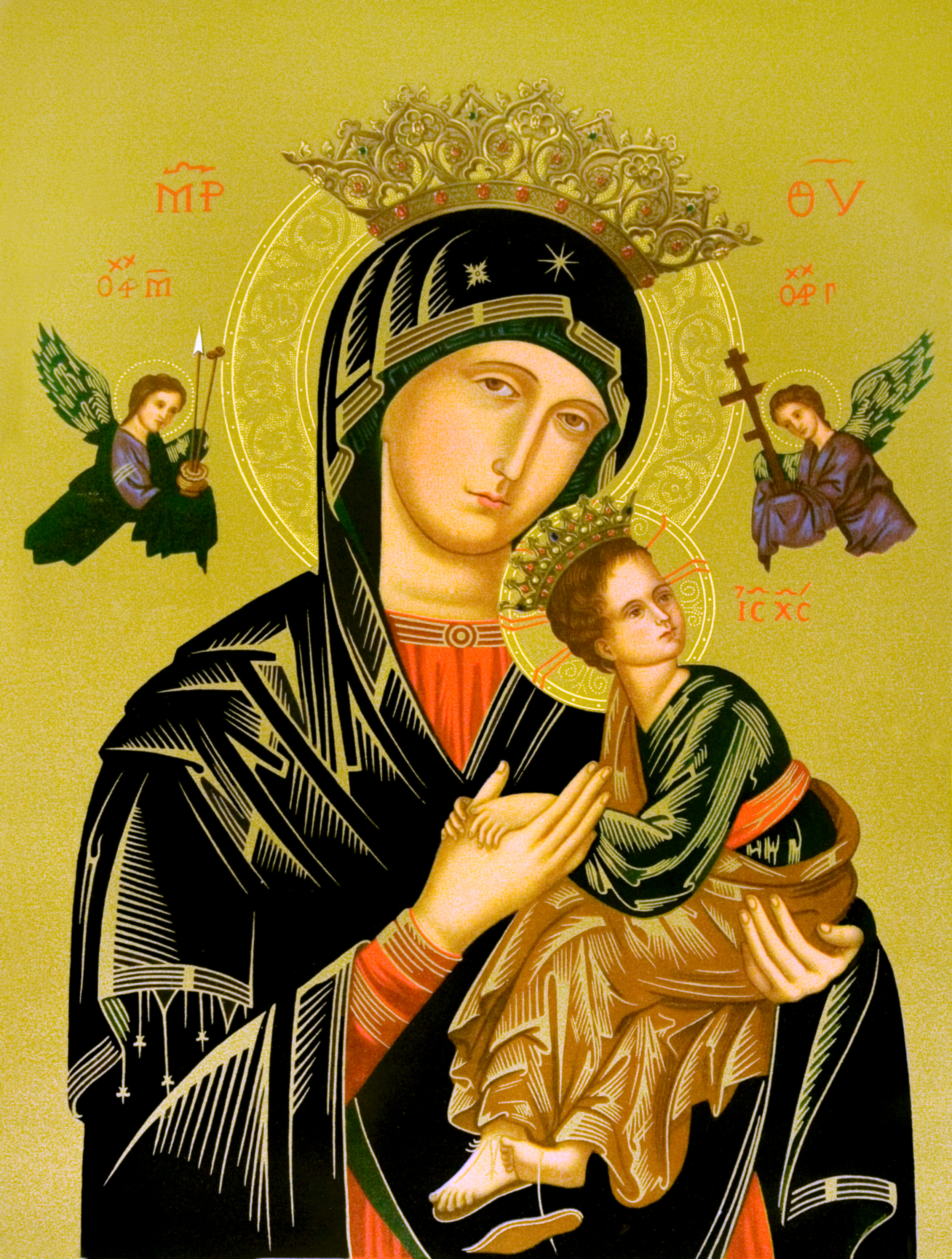The Symbols of Our Parish: The Icon
 Explore some of the artistic and historic elements that are such an important part of OLPH Parish. We are surrounded by items of great beauty, deep meaning, and rich tradition. Let's take a closer look at The Icon.
Explore some of the artistic and historic elements that are such an important part of OLPH Parish. We are surrounded by items of great beauty, deep meaning, and rich tradition. Let's take a closer look at The Icon.
The History
The legend is that this was the first icon ever made. St. Luke, who not only authored the Gospel of Luke and the Acts of the Apostles, but is also the patron saint of artists, was said to have painted it during Mary’s lifetime and that she gave it a special blessing. It is more likely that Our Mother of Perpetual Help is a Byzantine icon, believed to have its origin sometime during the 13th -15th century.
The icon is painted on wood and measures about 20“ in height. At various times the icon was in Crete, Rome and Paris. Today it is permanently enshrined in the Church of Saint Alphonsus Liguori in Rome. The icon is known for being miraculous; over the centuries countless healings and special graces have been attributed to it.
Father Edward J. Vattmann, at the time an Army Major at Fort Sheridan, provided a version of the painting of Our Lady of Perpetual Help to the newly built church in 1907, resulting in the naming of our parish in her honor when it was established as a permanent parish in 1919.
The Elements
Greek Characters
- ΜΡ θΥ = Mother of God.
- O AP M = the Archangel Michael; to Mary's right
- O AP I O = the Archangel Gabriel; to Mary's left
Mary’s Star
- Reminds us she is the dawn announcing the coming of Jesus.
- Symbolizes the role of Mary in the mystery of Christ and the Church.
- The star indicates that she is the one who will lead us to Christ.
Mary’s Eyes
- Mary’s eyes are filled with compassion and love, are fixed on us, her children on earth.
- She is our source of constant comfort and hope.
- Her eyes draw all who look into her face toward the mystery of Redemption which she holds in her arms.
Archangel Michael
- He is holding a lance, a pole with a sponge, and a vessel of vinegar.
- These prefigure scenes from Jesus’ crucifixion.
- The Archangel’s veiled hands inculcate reverence for holy things.
Archangel Gabriel
- He is holding a cross and nails, the very instruments of the coming death that has driven the boy Jesus to His mother’s safe embrace.
- His veiled hands inculcate reverence for holy things.
Mary’s Cloak
- The colors of Mary’s cloak symbolize both her virginity (red) and motherhood (blue). These are also the colors of royalty.
- Blue is the color worn by mothers in Palestine, symbolic that Mary is both virgin and mother. Her red tunic underneath is the color worn by virgins during the time of Jesus.
Mary’s Hands & Arms
- Mary’s hands and arms hold Jesus in a manner that indicates she is presenting Him to us.
- Her right hand points directly into the heart of the Christ Child, up to the Cross the angel is holding.
- Her left hand position, along with the view of the right hand, is one of presenting the Child to those who stand before the icon as she says: “Receive the Word of God.”
The Face of Jesus
- The Christ Child looks out beyond the instruments of His passion to our future redemption.
- While Jesus’ body is that of a child, His face is more mature, symbolizing wisdom beyond His years.
Jesus’ Hands
- The joining of his hands with his mother’s signify the perfect conformity of Mary’s will with Her Son’s, and that together with Him, she participated in the work of the Redemption.
Jesus’ Clothes
- His green tunic symbolizes His humanity and creation.
- The red sash around His waist symbolizes the Blood of Christ shed for our salvation.
- The gold cloak is symbolic of the Resurrection.
- Together, the colors of the garments are a statement of the Incarnation, Passion, Death and Resurrection of Christ.
Mary’s Face & Mouth
- The smallness of her mouth teaches us to be silent before the presence of God.
Jesus’ Feet & Sandals
- The dangling sandal of the baby Jesus implies that he lept to the comfort of Mother Mary in anticipation of the Passion. He went so quickly that he shed his sandal.
The Gold Background
- The gold background represents heaven and the divine light of the Resurrection shining through the garments of Jesus and Mary entering into the one praying before the image.
